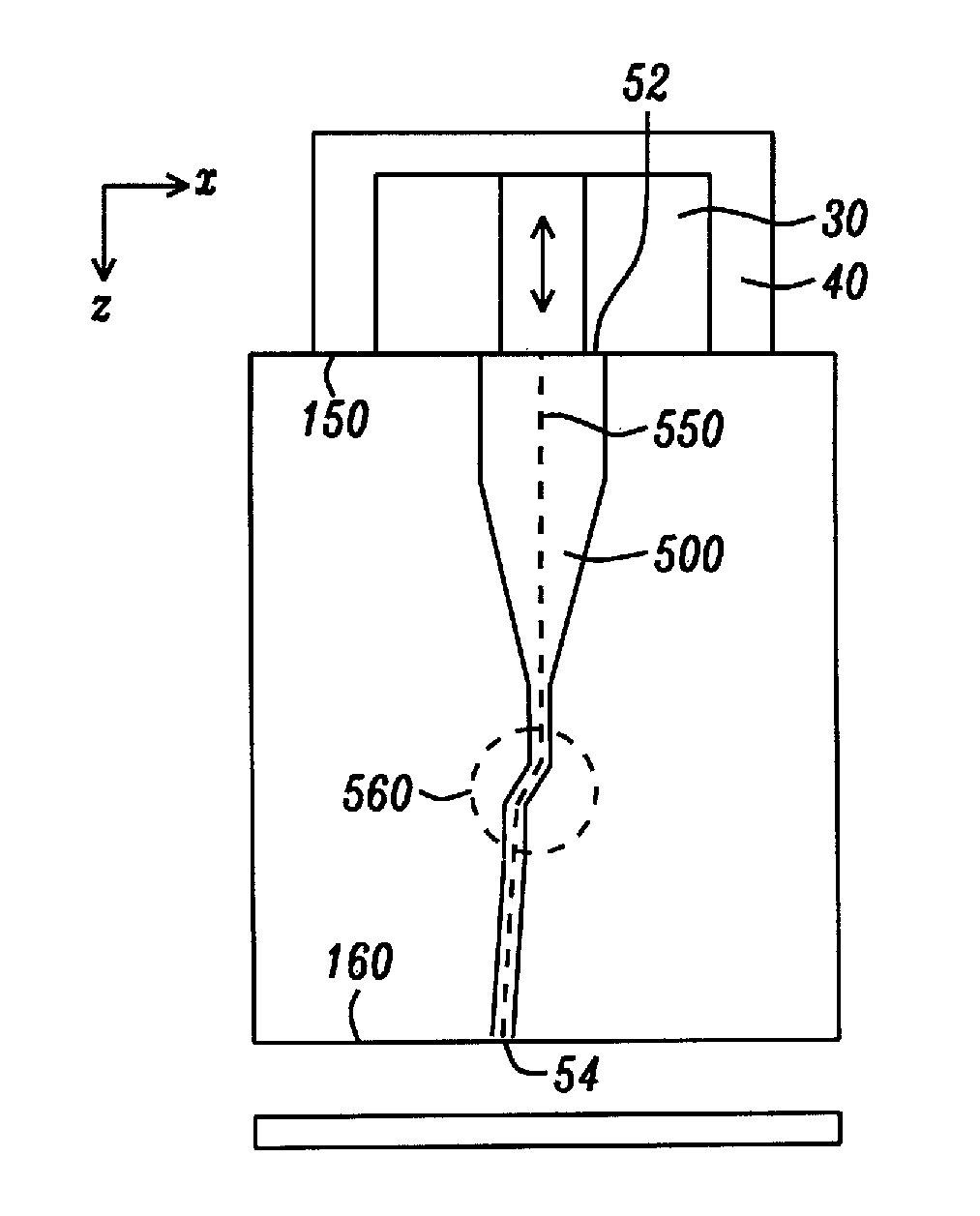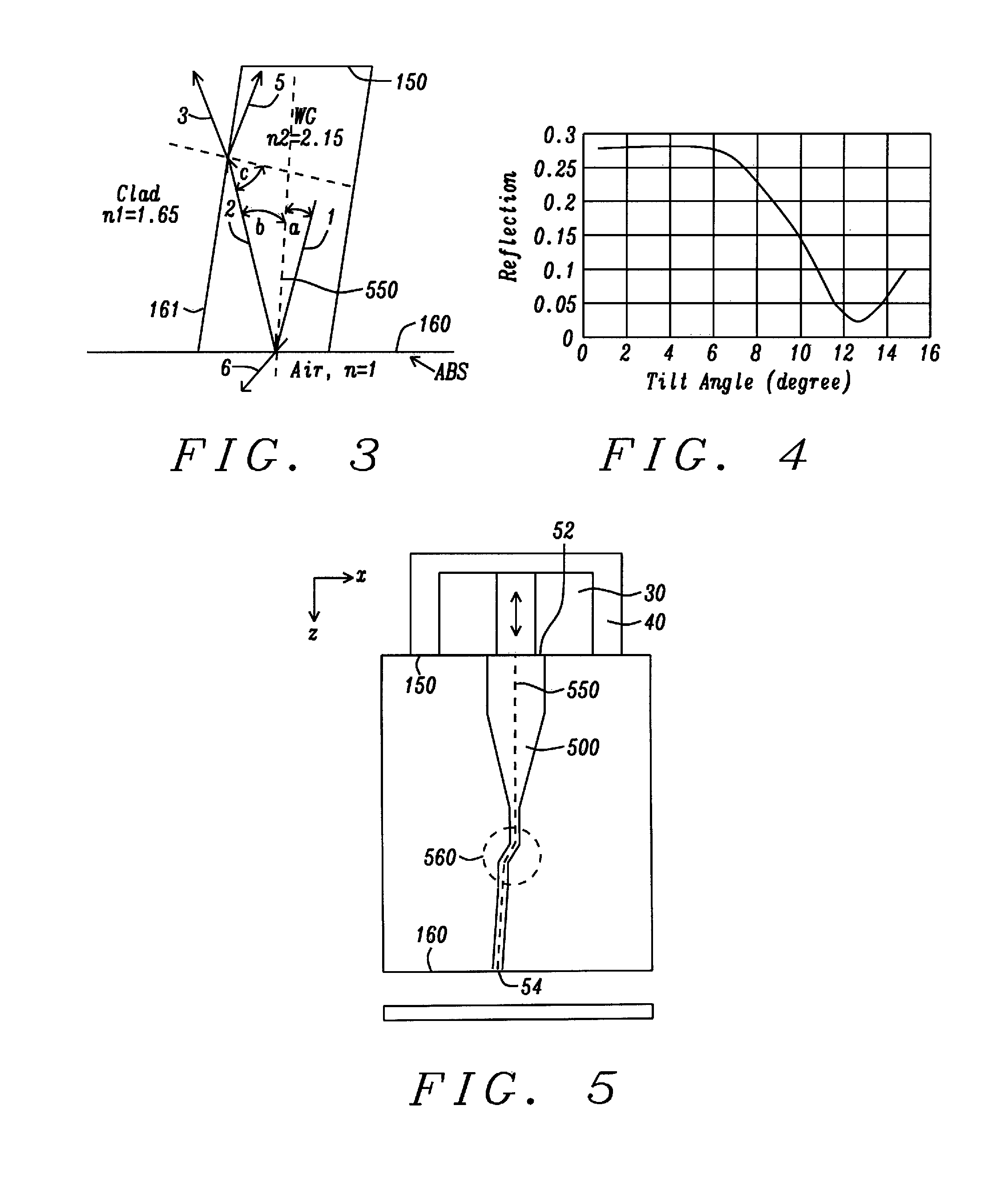Tilted structures to reduce reflection in laser-assisted TAMR
a laser-assisted tamr and tilting structure technology, applied in the field of magnetic read/write heads, can solve the problems of reducing the field gradient and broader field profile, reducing the thermal instability of the extremely small region of magnetic materials, and satisfying the requirements of simultaneously
- Summary
- Abstract
- Description
- Claims
- Application Information
AI Technical Summary
Benefits of technology
Problems solved by technology
Method used
Image
Examples
Embodiment Construction
[0040]The details of the following disclosure will be understood by first referring to FIG. 2, which shows, schematically, a basic TAMR slider structure similar to that shown in FIG. 1(a), but with the waveguide (500) now inclined relative to the vertical (z-direction) so that the center line (550) through the waveguide, along the light-propagation direction, makes a uniform angle to the normal (which is the z-direction) of both the back end surface (150) of the slider and the ABS surface of the slider. The tilted waveguide has the same y-z cross-section as the waveguide shown in FIG. 1(b), but both the top surface (52), in the back end plane of the slider, and the bottom surface (54), in the ABS plane (160) of the slider, are tilted at the same angle to the normal (the z-axis).
[0041]Referring next to FIG. 3, there is shown a diagram schematically illustrating an application of Snell's Law of reflection to the back reflection of the optical laser light at the interface between the w...
PUM
| Property | Measurement | Unit |
|---|---|---|
| angle | aaaaa | aaaaa |
| angle | aaaaa | aaaaa |
| width | aaaaa | aaaaa |
Abstract
Description
Claims
Application Information
 Login to View More
Login to View More - R&D
- Intellectual Property
- Life Sciences
- Materials
- Tech Scout
- Unparalleled Data Quality
- Higher Quality Content
- 60% Fewer Hallucinations
Browse by: Latest US Patents, China's latest patents, Technical Efficacy Thesaurus, Application Domain, Technology Topic, Popular Technical Reports.
© 2025 PatSnap. All rights reserved.Legal|Privacy policy|Modern Slavery Act Transparency Statement|Sitemap|About US| Contact US: help@patsnap.com



